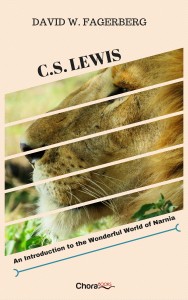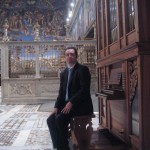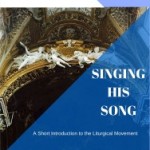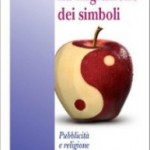 I am sure that not everyone is familiar with the very name of C.S. Lewis but many more would be familiar with one of his most famous creations: the Chronicles of Narnia. How many kids, how many people in general were taken from the adventures. Indeed Clive Staples Lewis (1898-1963) was a very interesting character, a Christian apologist that has influenced the lives of many. He had written: “To love at all is to be vulnerable. Love anything and your heart will be wrung and possibly broken. If you want to make sure of keeping it intact you must give it to no one, not even an animal. Wrap it carefully round with hobbies and little luxuries; avoid all entanglements. Lock it up safe in the casket or coffin of your selfishness. But in that casket, safe, dark, motionless, airless, it will change. It will not be broken; it will become unbreakable, impenetrable, irredeemable. To love is to be vulnerable” (The Four Loves). So, even today, he certainly deserves our full attention.
I am sure that not everyone is familiar with the very name of C.S. Lewis but many more would be familiar with one of his most famous creations: the Chronicles of Narnia. How many kids, how many people in general were taken from the adventures. Indeed Clive Staples Lewis (1898-1963) was a very interesting character, a Christian apologist that has influenced the lives of many. He had written: “To love at all is to be vulnerable. Love anything and your heart will be wrung and possibly broken. If you want to make sure of keeping it intact you must give it to no one, not even an animal. Wrap it carefully round with hobbies and little luxuries; avoid all entanglements. Lock it up safe in the casket or coffin of your selfishness. But in that casket, safe, dark, motionless, airless, it will change. It will not be broken; it will become unbreakable, impenetrable, irredeemable. To love is to be vulnerable” (The Four Loves). So, even today, he certainly deserves our full attention.
To rediscover the importance that this Christian thinker may have in our life, we turn again to Professor David W Fagerberg who, not long ago, has spoken to us on liturgical theology. A Professor in the Department of Theology from Notre Dame University, Dr Fagerberg is the author of a recent eBook, C.S.Lewis: An Introduction to the Wonderful World of Narnia (Chorabooks, Hong Kong: 2016). Let us ask him about what he wanted to achieve with this eBook.
Who was C.S. Lewis?
If there had been web sites in Lewis’ day, you would have found him in the faculty pages first of Oxford for thirty years as “Tutor in English Language and Literature” and then Cambridge for nine years as “Professor of Medieval and Renaissance English,” until his death in 1963. His faculty CV would have mentioned some major books contributed to this field, like The Allegory of Love: A Study in Medieval Tradition and English Literature in the Sixteenth Century Excluding Drama. He was popular enough with his students and colleagues. But the world beyond the medieval literature classroom got to know him because he thought his way from atheism, to theism, to Christ, and wrote about the Christian faith. He is what you would call an “apologist” – giving an account or reasonable explanation for Christian truths. He did so in a variety of forms: some books were detailed argument (Miracles, The Problem of Pain), some insights into human nature communicated through fiction (Screwtape Letters, The Great Divorce), his own conversion he told in allegory (The Pilgrim’s Regress), his talks on the BBC radio explained Christian doctrine (and were published as Mere Christianity). Perhaps his most famous set of writings is The Chronicles of Narnia – children’s stories, in one way, but of rich reward to adults, too. The way they came about he explained by saying, “Let us suppose that there were a land like Narnia and that the Son of God, as He became a Man in our world, became a Lion there, and then imagine what would happen.” In short, he was a believer who brought doctrine and imagination together.
Why did you become interested in him?
I tell this story in the opening pages of the eBook because it explains my approach. I had read Lewis when I was in high school, but when I became a philosophy major in college I put him away, thinking he was not serious enough. Then in graduate school I had a philosophy professor who had had his own run-in with Lewis. Paul Holmer had written an angry letter to Lewis – in class he never divulged the contents of that letter – but said he received such a gracious reply from Lewis, that he began re-reading him, and eventually attended one of his seminars. About that same time, I was reading The Chronicles of Narnia to my children, and I began to think that Lewis actually knew a great deal about the makeup of the human person, and brought new dimensions to theological study.
Why should he be remembered nowadays?
I will answer this by continuing this story about Holmer’s influence on me. He taught courses on the role of the subject in thinking, as described by Wittgenstein and Kierkegaard. One of his summary remarks was “Not all things can be said; some things must be shown.” This, I contend, is what Lewis does: he shows truths.
What truth does he primarily show?
The transfiguration that God is working. Many people think they like Lewis because he is a moralist, but I think they really like him because he shows this theology of transfiguration. That’s why he should be remembered.
What was his relationship with Chesterton?
They overlapped (Lewis was 38 when Chesterton died in 1936), but never met. But Chesterton had contact with him through his books. When Lewis wrote his autobiography and explained his conversion in 1931, he records: “It was here that I first read a volume of Chesterton’s essays. I had never heard of him and had no idea of what he stood for; nor can I quite understand why he made such an immediate conquest of me.” And, “In reading Chesterton … I did not know what I was letting myself in for. A young man who wishes to remain a sound atheist cannot be too careful of his reading. There are traps everywhere.” The main help came from Chesterton’s book Everlasting Man, a book that explained Christianity not as an exception to all religious mythology (which Lewis loved), but as the fulfillment of the quest(ion) mythology was on. Lewis came to say he could look upon Christianity as “true myth.”
What does your eBook add to our knowledge of CS Lewis?
On the one hand, there’s no newly unearthed information – research into CS Lewis has become quite an industry! But on the other hand, I am trying to show something about The Chronicles by reading essays Lewis himself wrote about fairy tales. That’s why I have juxtaposed biography and fiction: I use Lewis’s own description about what he intended to do, and then go to look for examples of it in Narnia.
Can you guide us a bit through your text?
The material is divided into two parts, basically asking first “How did Lewis arrive at Narnia?” and second “What did he find when he got there?” This requires telling a brief biography of Lewis and his conversion. Based on his own essays, I think the process can be described as “the lure of Romanticism.” (This was something he discussed with fellow Inkling, Charles Williams, and I treat in chapter one of my new book Consecrating the World.) Then I look at what Lewis said about children’s stories, and what he intended to do with his Narnia stories. And finally I look at each of the seven Chronicles for the theme of mysterium tremendum that I think is key to Aslan.
It seems that children’s stories are indeed very serious stuff…
Indeed! Lewis titles one of his essays, “Sometimes Fairy Stories May Say Best What’s to Be Said.” That’s precisely the point. The Narnia books began, he says, with an image he had carried around in his head for decades of a faun, a lamppost, and an umbrella. When he tried to write it out, he fell in love with the form for its brevity and restrictions. Then Aslan came bounding into the story (unbidden, Lewis says), and he began to think of what could be done by means of this kind of story, mythological in nature. He writes, “I thought I saw how stories of this kind could steal past a certain inhibition which had paralyzed much of my own religion in childhood.” He thought he could “steal past those watchful dragons” that spoiled the thrill of Christian faith.
What do you think of the movies about Narnia?
I’ll answer with an image. In the Space Trilogy the character, Ransom, has a conversation about making poetry and making crafts, and he says, “The best poetry, then, comes in the roughest speech?” A creature of the planet called a pfiffltrig answers, “Perhaps. As the best pictures are made in the hardest stone.” I think Lewis found the fairy tale a “hard stone,” and it’s why he liked it. I think the recent Hollywood movies are, unfortunately, rather soft as a medium. There is a lot of dazzle, but they aren’t sturdy enough to tell the story. (I much prefer the 1980 BBC televised series, which has worse special effects but is more faithful to the text.)
Are there quotes from Lewis that you keep always with you in your mind?
Lots of them. Are you asking me to pick favorites? That’s difficult, but I’ll first identify the top two from his nonfiction. “Do you think I am trying to weave a spell? Perhaps I am; but remember your fairy tales. Spells are used for breaking enchantments as well as for inducing them” (from The Weight of Glory). He says we need a spell to wake us from the enchantment of worldliness. And in Mere Christianity he describes holiness. “Their very voices and faces are different from ours; stronger, quieter, happier, more radiant. They begin where most of us leave off.” Beautiful! But now, if there are some fans of Narnia among your readers I will just allude to some passages that they will be able to finish in their own minds. “Who said anything about safe? ‘Course he isn’t safe. But he’s good. He’s the King, I tell you.” “She could feel lion-strength going into her. ‘Now you are a lioness.’” “You will have to let me undress you.” “You would not have called to me unless I had been calling to you.” “Please, you are so beautiful. You may eat me if you like. I would sooner be eaten by you than fed by anyone else.” “Further up and further in.” You will find those quotes celebrated in the second half of the EBook.
I know one of your next projects will involve Chesterton. What will be the perspective you are going to use for your coming book?
Chesterton (like Lewis) continues to be remarkably relevant. The book that propelled Chesterton to prominence, Orthodoxy, was written in 1908, yet in it he identifies the heretical acorns before they grew into trees. I find Chesterton’s smiling face peeking out at me from behind daily headlines and news stories, and I record those encounters for my regular column in Gilbert magazine. In this next book I will gather some of those essays around certain themes and present them. If Chorabooks continues to be patient with me, I would like later to write an introduction to Chesterton and his thought. Many biographies continue to be published, but I would write from my own experience of Chesterton guiding me into the Catholic Church. It is very gratifying to be able to spend time in the presence of these two minds: Lewis and Chesterton. They continue to teach and inspire.
(From O Clarim)












